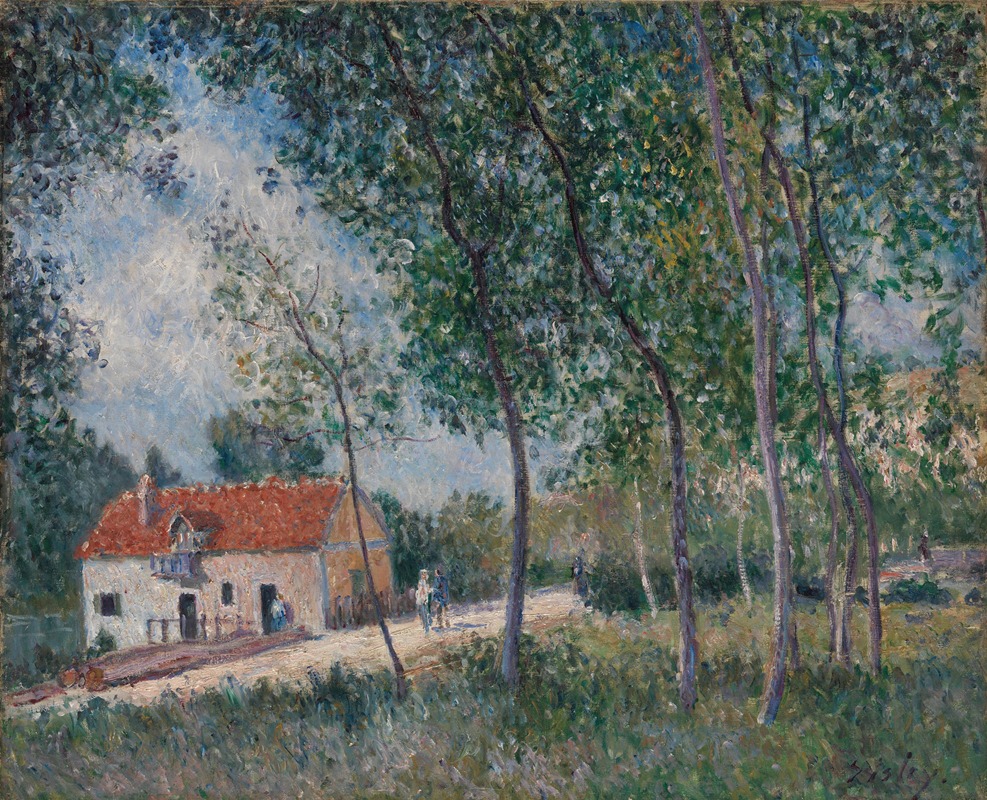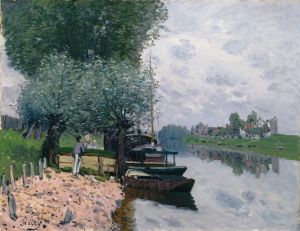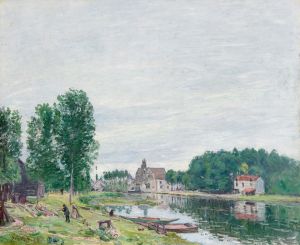
The Road from Moret to Saint-Mammès
A hand-painted replica of Alfred Sisley’s masterpiece The Road from Moret to Saint-Mammès, meticulously crafted by professional artists to capture the true essence of the original. Each piece is created with museum-quality canvas and rare mineral pigments, carefully painted by experienced artists with delicate brushstrokes and rich, layered colors to perfectly recreate the texture of the original artwork. Unlike machine-printed reproductions, this hand-painted version brings the painting to life, infused with the artist’s emotions and skill in every stroke. Whether for personal collection or home decoration, it instantly elevates the artistic atmosphere of any space.
"The Road from Moret to Saint-Mammès" is a notable painting by the renowned Impressionist artist Alfred Sisley. Created in 1883, this artwork exemplifies Sisley's dedication to capturing the transient effects of light and atmosphere, a hallmark of the Impressionist movement. Sisley, a British-born artist who spent most of his life in France, is celebrated for his landscape paintings that often depict serene rural scenes.
This particular painting portrays a road leading from the town of Moret-sur-Loing to Saint-Mammès, both located in the Île-de-France region near the Forest of Fontainebleau. Moret-sur-Loing, where Sisley lived for several years, frequently served as a subject in his works. The town's picturesque surroundings provided ample inspiration for Sisley, who was deeply influenced by the natural beauty of the French countryside.
In "The Road from Moret to Saint-Mammès," Sisley employs a soft, muted palette that captures the gentle light of the region. The painting features a winding road flanked by lush greenery, with trees lining the path and a clear sky overhead. Sisley's brushwork is loose and fluid, characteristic of the Impressionist style, allowing him to convey the movement of light and shadow across the landscape. This technique also imparts a sense of immediacy and spontaneity, as if the viewer is experiencing the scene in real-time.
Sisley's focus on the interplay of light and color is evident in the way he renders the foliage and sky. The dappled sunlight filtering through the trees creates a dynamic pattern of light and shadow on the road, while the sky is painted in soft blues and whites, suggesting a calm, clear day. This attention to atmospheric conditions is a defining feature of Sisley's work, reflecting his interest in capturing the ephemeral qualities of nature.
The composition of the painting is carefully balanced, with the road leading the viewer's eye into the distance, inviting them to explore the tranquil landscape. This sense of depth and perspective is enhanced by the placement of trees and the subtle gradation of color, which guide the viewer through the scene. Sisley's ability to create a harmonious and inviting composition is a testament to his skill as a landscape painter.
Alfred Sisley's contribution to the Impressionist movement is significant, and "The Road from Moret to Saint-Mammès" is a prime example of his mastery in depicting the natural world. His works are celebrated for their lyrical beauty and ability to evoke a sense of peace and serenity. Today, Sisley's paintings are held in high regard and can be found in major art museums and collections worldwide, where they continue to be admired for their exquisite portrayal of the French landscape.
In summary, "The Road from Moret to Saint-Mammès" is a quintessential Sisley painting that captures the essence of the Impressionist movement through its focus on light, color, and atmosphere. It stands as a testament to Sisley's enduring legacy as one of the foremost landscape painters of his time.


















